TV signal amplifier: how it works and how to choose a digital TV signal amplifier
A weak signal from the transmitter causes poor reception of TV channels in places far from television towers. To improve image quality, a television signal amplifier is used - a small device that is installed on the antenna and connected with a cable.
We will talk about how amplifiers work and what criteria for choosing devices are decisive. Here you will learn everything about the types of antenna amplifiers, their pros and cons. Taking into account our recommendations, you can purchase the model that best suits you.
The content of the article:
Why does the TV signal deteriorate?
Determining that a signal does not meet the requirements is easy. However, analogue and digital television receivers respond differently.
In the first case, gray-white ripples or “snow” appear, the picture is partially distorted or disappears completely. In the second, the image freezes and becomes green or “pixelated.”
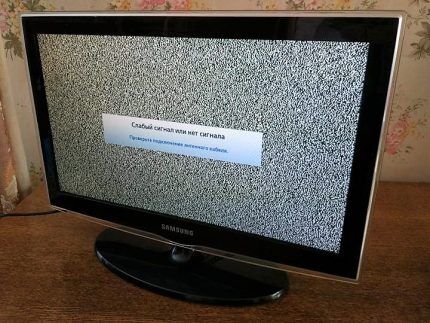
There are many reasons for signal deterioration - from defective antennas that quickly fail to the unusable condition of the cable or connector. There are also more serious reasons - for example, the distance from the transmitter is too great, which even a powerful antenna with an amplifier cannot cope with.
The digital signal may disappear in the following cases:
The quality of image and sound can be affected not only by the cable, but also by old, oxidized connectors, splitters, connectors - any additional elements other than the amplifier.
Even with properly selected equipment, noise can occur from all kinds of transmitting devices - modems, radio stations, repeaters, routers, and even devices that are not equipped with an antenna.
It happens that, due to incorrect calculations, an antenna or amplifier with a gain that is too high is selected, as a result of which the signal is overloaded and adequate data transmission becomes impossible.
Digital TV signal amplifier
To eliminate some of the listed reasons, a digital TV signal amplifier is used. It is installed on an external antenna, next to the indoor one or separately, connected with a coaxial cable.The type of device is selected depending on specific conditions and requirements.
Purpose and principle of operation
Once you find out that you can improve the quality of transmitted information by leveling or stabilizing the received signal using an amplifier, all that remains is to buy a suitable device and install it. This almost always helps if the cable from your roof-mounted antenna is too long.
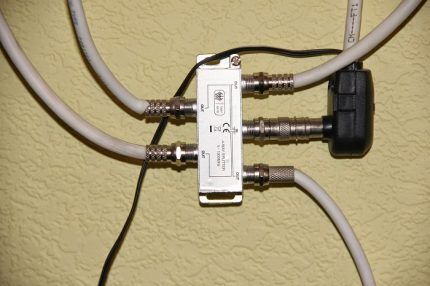
The purpose of a TV signal amplifier, therefore, is to improve data transmission and, as a result, a clear, unblurred picture on the TV screen and clear sound.
Digital television also differs from analog television in that when used at points remote from the broadcaster, you only need to install a narrowly directional antenna and select a signal-amplifying device for it.

Powerful devices for DVB-T2 not only amplify the signal received by the antenna, but can also perform additional functions: sum data transmission from 2-3 antennas or, conversely, divide one signal into several outputs.
Types of antenna amplifiers
In practice, you can check whether it is worth purchasing an amplifier in a simple way: install a TV and an antenna receiving the signal nearby. If the image becomes clearer, it makes sense to buy a signal amplifier; if the picture on the screen does not improve, you will first have to replace the antenna itself.

There are 3 categories of amplifiers on sale:
- Range. The sample is a UHF device intended for digital data transmission DVB-T2.
- Multi-band, operating in the decimeter and meter range, that is, recognizing all transmitted signals.
- Broadband – LSA and SWA. They amplify the signal transmitted in a given band.
If you tell a consultant in a store that you need a device to amplify a digital signal, then most likely he will offer a choice among special digital amplifiers - devices with boards that operate in the UHF (decimeter wave range).
Advantages and disadvantages of devices
The selected amplifier cannot be good or bad; it must meet the technical specifications. Even an expensive high-quality adapter can either improve the signal or make it unstable.
To prevent this from happening, the design of a home TV network should be thought through before installing the main elements - a TV, antennas and amplifying devices.
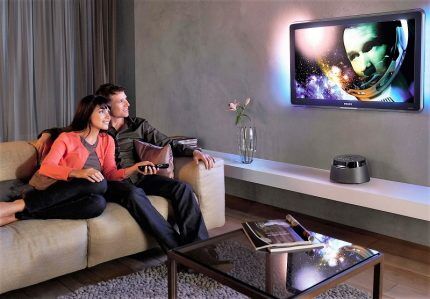
Ideally, when using several television receivers, the number of amplifiers should be limited, since any additional device distorts the video stream, and not only improves the signal. The result of distortions can be their layering on top of each other and a negative result.
An unexpected effect can be obtained if you use a wideband amplifier. Receiving signals of different levels from the repeater, the amplifier increases the frequencies and overloads the flow entering the connector of the receiver or decoder.
As a result, the signal parameters, and subsequently the image quality, drop sharply. The situation can be saved by the ability to adjust the amplifier, but not over the entire range, but at individual frequencies.
Recommendations for choosing an amplifier
It is not a fact that the selected amplifier will correct the situation. Some devices have their own noise, others are sensitive to surrounding interference. As a result of installing such a device, the signal will not improve, but will fade completely.
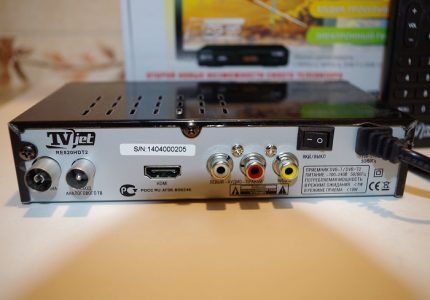
The amplifier is also not suitable if:
- the reception level has been exceeded, the device parameters cannot cope;
- the signal, on the contrary, is weak and does not improve;
- The antenna, in addition to the main signal, picks up interference, which is also amplified.
There is no point in chasing maximum gain, since all incoming signals are usually not needed. To avoid guessing, it is better to first measure the level of the transmitted signal and determine whether it is direct or reflected.
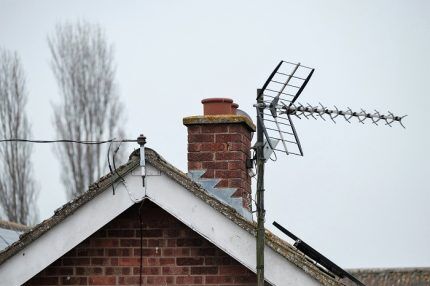
Digital television, as you know, has its own characteristics.If strong frequency fluctuations overlap each other when transmitting data, amplifying the signal will not help. It is better to purchase a passive directional antenna. The amplifier will only disrupt the stability and cause failures in the digital decoder.
To amplify the entire TV frequency band, broadband devices are used, but with the possibility of fixed amplification.
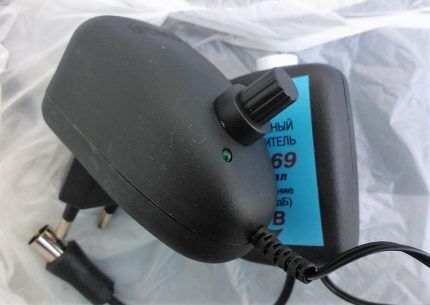
The appearance and size of the amplifiers should not be confusing, since most modern devices are designed for installation anywhere on a coaxial cable for an antenna. They are compact, ergonomic, and have suitable connectors. There is no need to disassemble or move the antenna for installation.
But remember: increasing the distance to the antenna leads to the appearance of its own noise, which can interfere with the passage of the signal.
When choosing an amplifier, be sure to consider the following criteria:
- noise factor;
- frequency range;
- gain;
- degree of protection.
An experienced consultant can select a model if you correctly describe your home TV network and explain the conditions for installing the antenna. A special table also helps when choosing, where the decisive criterion is the distance from the repeater to the receiver.
When choosing a device based on the power supply method, do not forget that the digital tuner also generates voltage, so you can connect a device with a 5 V microcircuit.
Conclusions and useful video on the topic
Amplifiers for passive antennas:
Digital TV device review:
When choosing a TV antenna amplifier, try to take into account all the criteria.The main mistake is ignoring own noise, which as a result does not improve the signal, but causes it to attenuate. High-quality parts, a minimally short cable, narrow antenna directivity - these are what you should pay attention to in order to reduce the noise level.
Please comment in the block below. We are interested in your opinion and stories about your personal experience in choosing and connecting a TV signal amplifier. Here you can ask questions if you have any while reading the information provided.



